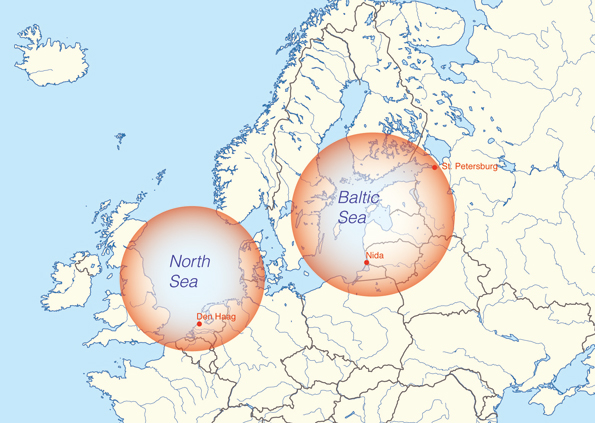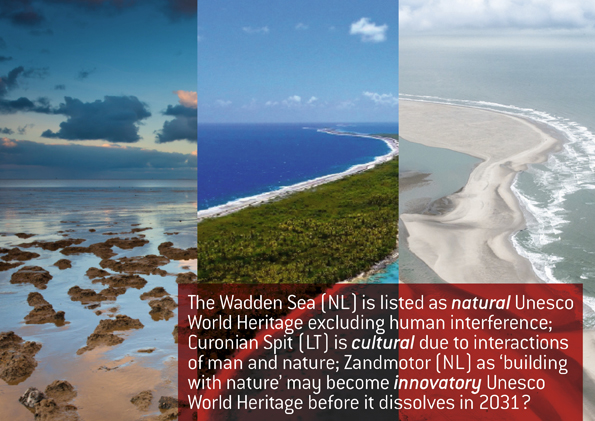NL-LITHUANIA
| 0000-00-00 00:00:00


NL - Nida Art Colony, Lithuania
The eye of the beholder
Man is an explorer and invented cartography to chart the world and model reality and it’s myths.
Since around 1800 the traveller gradually transformed in a tourist in search of paradise. Landscape became an imaginary construction. Travel books like Baedeker and Murray guided visitors through the landscape in the tracks of novels by sir Walter Scott and Jane Austen. Painters drew sketches in nature that were brought back to the atelier to develop into a painting after nature. The invention of paint in a tube made it possible for impressionist painters to work outdoors en plein air on artistic subjective perception of nature. Later the invention of the camera made it possible to further idealize nature on postcards. Land Art became Destination Art, the ‘bible’ for traveling art lovers. Digital manipulations unlimited constructions of the world, and the world wide web allows us to know about art and landscapes we will never see ourselves. The world becomes a myth once more that we may shape to our needs?
Whilst the Curonian Spit – where Nida Art Colony is based – has the status of cultural Unesco World Heritage as word wide example of interactions between man and nature, in The Netherlands – where Satellietgroep is based – the Dutch are masters in disguising the cultural landscape as a natural one. We tend to design, construct, reconstruct and deconstruct nature to fit it to our needs. Creating a condition where we are so intertwined with the landscape, it becomes impossible to make a distinction between man and nature. In fact, the constructing of nature is proudly called ‘New Wilderness’. The conditions are so controlled that we are incapable to let it run it’s natural course. Our sentiment can’t stop us from feeling sorry for the animals that die ‘naturally’ in the Oostvaardersplassen (a man-made nature reserve in the Netherlands).
In contrast to the cultural Unesco status of the Curonian Spit, in the north of The Netherlands The Wadden Sea is natural Unesco World Heritage. Though it is the largest and ‘unbroken’ intertidal mud flat area, it still exists due to human interferences. However, on the Unesco charts of the Wadden Sea the shipping lanes and the islands are excluded…… Is this denial of human existence and the impact on nature?
More: http://www.satellietgroep.nl/collaboration_nida_art_colony/1
2015: Thijs Ebbe Fokkens (NL) exchange artist in residence at Nida Art Colony
2014-2015: Theun Karelse (NL) exchange artist in residence at Nida Art Colony and Zandmotor
2014: Expedition Eridanos by Bram Esser and Francois Lombarts
2014: Inter-Format Symposium 'On Flux of Sand and Aquatic Ecosystems’ at Nida Art Colony with 50+ participants. Dutch participants: Jan de Graaf (urbanist), artists Marinus van Dijke, Jeroen van Westen, Edwin Deen, Theun Karelse, philosopher Bram Esser, designer Francois Lombarts and the team of Satellietgroep with Ronald Boer (art and landscape), Eliane Bots (filmmaker) and Jacqueline Heerema (art and heritage).
